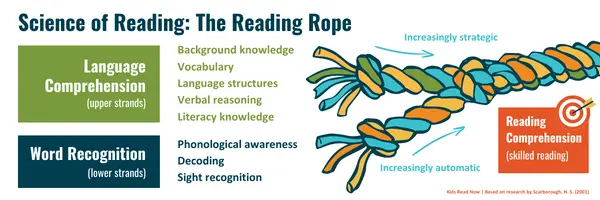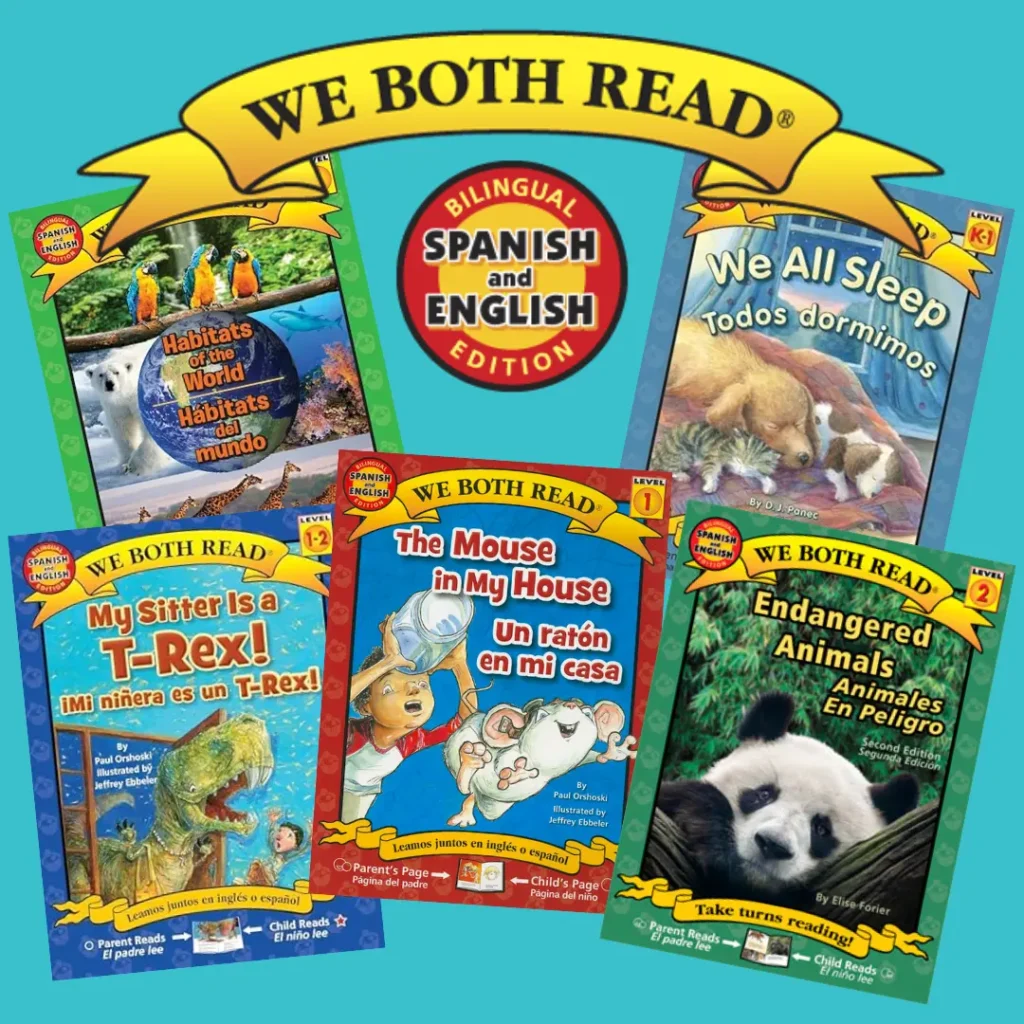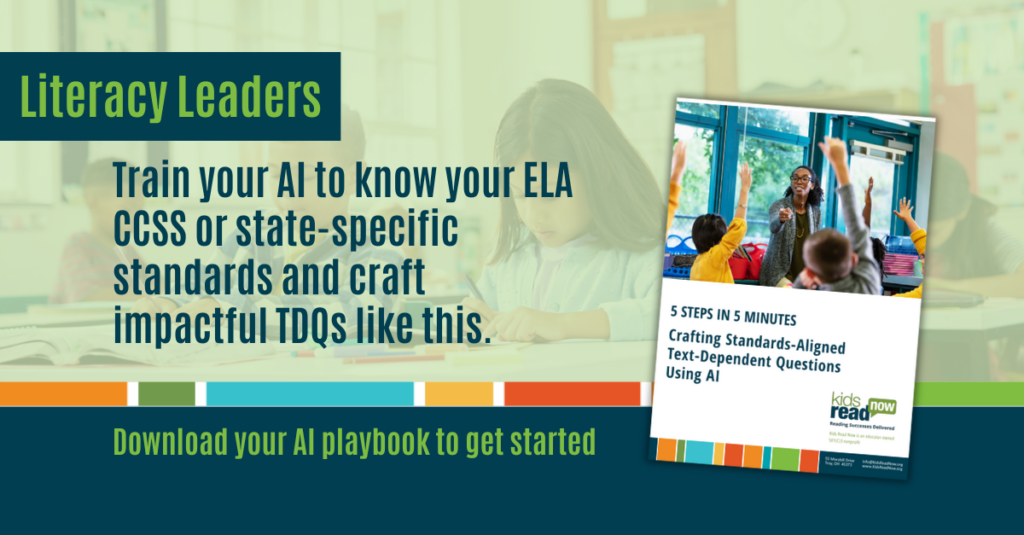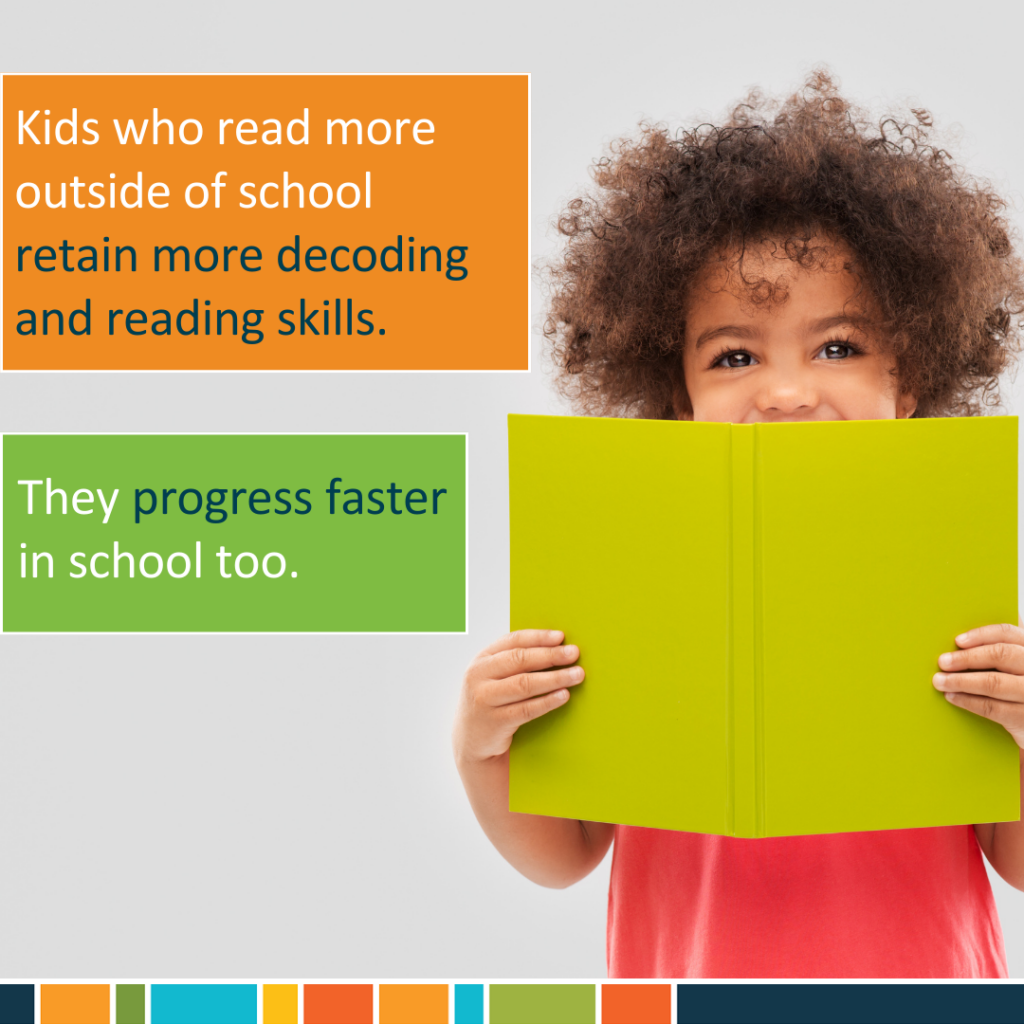Estimated reading time: 7 minutes
The key to supporting bilingual literacy in your schools
Literacy Leaders — Bilingual students benefit from certain scaffolding and instructional techniques to access grade-level standards.
You already know this, right?
Here’s something new for 2024: Kids Read Now is expanding its program to better meet the needs of bilingual students and families.
For you, this represents an easy way to support your English Learners (ELs) and close literacy gaps. We offer more bilingual books, a multilingual app, and parent engagement tools like Discovery Questions.
Explore how this program can transform outcomes in your school or district.
Resources boost language comprehension for English Learners
Kids Read Now continually strives to be culturally responsive, honoring children’s differences and strengths to improve literacy outcomes.
Our program helps create a book-rich home environment, and through our guiding questions in the student’s home language AND English, we increase access to deeper vocabulary and comprehension skills.
Now, in 2024, families who speak a language besides English at home have improved access to Kids Read Now’s resources.
One of our program’s most valuable tools, called Discovery Questions, addresses critical strands of Scarborough’s Reading Rope — those related to language comprehension. Resources are always grounded in evidence and best practice.

Under the direction of CEO Dr. Kristen Walter, Ed.D., these enhancements empower families to actively participate in their children’s literacy development and become educational collaborators, irrespective of adult language and reading skills.
Break barriers in your literacy progress
Discover the program that transforms reading habits and elevates district-wide literacy outcomes.
Challenge what’s possible. Explore with us.

How Kids Read Now supports bilingual students and families
In this video, Dr. Kristen Walter shares how Kids Read Now is making a real difference for bilingual learners by offering resources that strengthen literacy at home and beyond.
Learn more about Dr. Kristen Walter and leadership at Kids Read Now in 2024: Kids Read Now Celebrates Milestone Achievements and Welcomes New CEO Kristen Walter
Empowering bilingual students with access and choice
One of the core goals of Kids Read Now is to help families create book-rich environments that promote daily reading routines.
Said another way, we strive to eliminate the book deserts that are all too common in places with a high percentage of non-English-speaking households.
Our solution? Breaking accessibility barriers by mailing books directly to students’ homes — books that students chose themselves and are motivated to actually read. Books they get to keep, reread, and fall in love with.
An inside look at what’s unique about bilingual books
Just like many of the books in English on our Wish List, we continue to add more bilingual books, including but not limited to the We Both Read series.
Take a look inside…
- The “shared reading” format functions the same as Kids Read Now’s English-only books.
- You’ll find a consistent pattern when flipping every page: a Parent Page (Página del padre) on the left and adjacent Student Page (Página del niño) on the right.
- Both parents and children have a choice on every page to read in English or Spanish — or both!
- Text formatting and accompanying visuals support comprehension in home language and in English.
- Books provide opportunities to engage in storytelling and conversations about literacy regardless of the English proficiency of different family members.


See how our new bilingual books support family engagement
Explore our entire selection of bilingual books, including the We Both Read series and more! Get details like author, summary, genre, and recommended grade level.
The Key to Supporting Bilingual Literacy in your Schools for 2024-2025
Student choice, self-efficacy, and a love of reading
For Dr. Walter and Kids Read Now, student choice isn’t just about book selection. Students feel empowered when they’re allowed to choose how they engage with and respond to reading.
“One of the other reasons that we offer a bilingual collection of books is so that children can expand their vocabulary and their background knowledge in their home language, making new English concepts stickier in a child’s mind.”
Dr. Kristen Walter, Ed.D. | Executive Director, Kids Read Now
It’s the power of choice. We’re on a mission to support all students in developing a love of reading through consistent, enjoyable in-home practice.
Supporting bilingual literacy in 2024 and beyond
With research and cultural responsiveness as core values, Kids Read Now helps bridge the gap between school and home, ensuring students’ literacy development continues beyond the classroom.
Offering bilingual books, an app with 100+ language translations, and Discovery Questions that guide family discussions in their home language, the program helps bring families together through reading.
Making reading a collaborative experience aligns with our vision of all students as lifelong learners who love reading.
And remember, we’ve got your back — in 2024 and beyond.
What will you change this year to end the trend of PreK-5 reading loss?
If you’re ready to make a difference, augment your existing curriculum, and get your students practicing their reading outside of school time, then Kids Read Now is ready to help. Our supplemental, in-home, independent reading program is research-based and proven to work.
Frequently Asked Questions
Answer: A bilingual learner is a student who is actively learning in two languages, often balancing proficiency in their home language while acquiring or developing skills in a second language, such as English. These learners may vary in their levels of fluency in each language, but the goal is for them to become competent in both, using their home language as a foundation to support learning in the new language.
Answer: It depends largely on age and life experiences. Bilingual learners can be literate in one, both, or neither language. Similarly, they may fluently speak one, both, or neither language. A new kindergartner, for example, is likely unable to read proficiently in English or their home language, no matter what that language is. While they have the benefit of learning more than one language at a younger age, which often means they’ll take on literacy skills more quickly or proficiently, they likely require scaffolding and protocols specific to bilingual learners to master speaking, listening, reading, and writing in English.
Answer: Research says yes! Typically, literacy skills — those required to read, write, and comprehend — in one language greatly enhance the speed and ability with which students acquire the same skills in another language. For example, a 4th grader who immigrated to the US last year and can read and write proficiently in Spanish would theoretically learn to read and write in English more quickly or ably than a similar student with limited or no Spanish literacy skills.



